






The BrainHealth™ Patch Program is designed for Girl Scouts of all levels to spark Curiosity, Creativity, and Courage. Through a series of hands-on activities, girls will discover their unique brain powers, connect with others creatively, and take action to inspire their family, friends, and communities to lead brain-healthy lives.
• The Curious Brain activities empower each girl to explore how their brain works best as they think, feel, play, and connect.
• The Creative Brain activities bolster confidence and flexibility in how girls take action and make inspired decisions.
• The Courageous Brain activities encourage innovation as girls navigate new experiences through a brain-healthy lens.
Caregivers and volunteers will receive helpful resources to support each girl’s brain health. Use this patch program as a resource all year!
This patch program was created in partnership with the Center for BrainHealth at the University of Texas at Dallas. Once girls have completed the requirements, please complete the online reporting form to be eligible for a free BrainHealth Patch. Only one entry per troop or Juliette is required. See online reporting form here: www.gsnetx.org/patchform
BrainHealth Patch Requirements:
Daisies: Complete 1 Discover, 1 Connect, 1 Take Action
Brownies: Complete 2 Discover, 1 Connect, 1 Take Action
Juniors: Complete 2 Discover, 1 Connect, 1 Take Action
Cadettes: Complete 3 Discover, 2 Connect, 2 Take Action
Seniors/Ambassadors: Complete 4 Discover, 2 Connect, 2 Take Action
CULTIVATING

Cultivate brain health by being CURIOUS, CREATIVE & COURAGEOUS
1. Your Brain is Such a Character
2. BrainHealthy Jeopardy
3. Brain Smarts
4. Build a Neuron
5. Compassion Garden
6. Your Brain on Gratitude
7. Courageous Connection
Objective
This Curious Brain Activity was created for Girl Scouts of all levels. Discover how special chemical messengers in the brain pass information back and forth between cells and tell the brain what to do.
Materials
Neurotransmitters Google Doc w/ Slides (See Resources & Next Page)
Neurotransmitters Coloring Pages
Coloring and/or Writing Tools
Phone or tablet for video recording (optional)
Creative props for skit or video (optional)
Say
1. Today we are going to learn about how chemical messengers in the brain drive our attention, allow us to learn, and cause our emotions and reactions Then, we will create skits to animate the chemicals and portray them as unique characters.
2. The chemicals serotonin, norepinephrine, dopamine, oxytocin, GABA, and glutamate are used to communicate between neurons in the brain, transmitting messages back and forth. That’s why they are called neurotransmitters. For example when GABA – the primary “off” signal neurotransmitter – is released, the neurons become less active or “chatty” with their neighbor neurons. In this activity, we will learn about the special role each of these chemicals has in the brain.
3. Let’s get everyone divided into small groups Then, I will randomly assign one of the six different neurotransmitters for you to explore. When you get your assignment, find the corresponding slides on the Google Document that explain the role your neurotransmitter has in everyday life.
4. Feel free to jot down notes and observations on your worksheets as you learn.
5. Brainstorm as a group how you might bring your special neurotransmitter to life, telling about its traits and behaviors like a character in a story or a movie.
6. Prepare a 2-3 minute skit to act out, or record it as a short video, showing the group the unique characteristics of your neurotransmitter.
Do
1. Pass out the worksheets and writing and/or coloring tools.
2. Divide the girls into small groups based on troop size so that each group is assigned one of the six chemicals: serotonin, norepinephrine, dopamine, oxytocin, GABA, and glutamate
3. Share the Google Doc on an overhead screen or pull up the slides for the girls to explore in their small groups on a laptop or tablet.
4. Remind the girls to write out notes and ideas on the worksheets as they learn.
5. Once each group has explored the information on the slides, challenge them to think of how they might create a short skit showing that neurotransmitter as a special character in a story. You might ask them to think of personality traits or behaviors it is likely to have based on what they learned about it. Encourage creativity and imagination!
6. Have each group either record a 2-3 minute video or perform a skit bringing their neurotransmitter to life.
7. As the group watches, have other girls record their observations on the worksheets and think about what details helped them to learn more about each chemical messenger.
8. Applaud everyone for getting curious about the brain and showing creativity!
Reflect
• Think of an experience you have recently had when one of the neurotransmitters may have been released. Share which chemical messenger could have been at work and briefly talk about what happened.
• If you were to tell a friend or family member about one of these neurotransmitters, how would you explain it?
Resources
• Info on neurotransmitters: https://www.ncbi.nlm.nih.gov/books/NBK539894/
• Neurotransmitters Google Doc: https://www tinyurl.com/brainchemicals
Select your assigned neurotransmitter below to learn more.
Meet GABA
Meet GABA.pptx
Meet Dopamine
Meet Dopamine.pptx
Meet Serotonin
Meet Serotonin.pptx
Meet Norepinephrine
Meet Norepinephrine.pptx
Meet Glutamate
Meet Glutamate.pptx
Meet Oxytocin
Meet Oxytocin.pptx
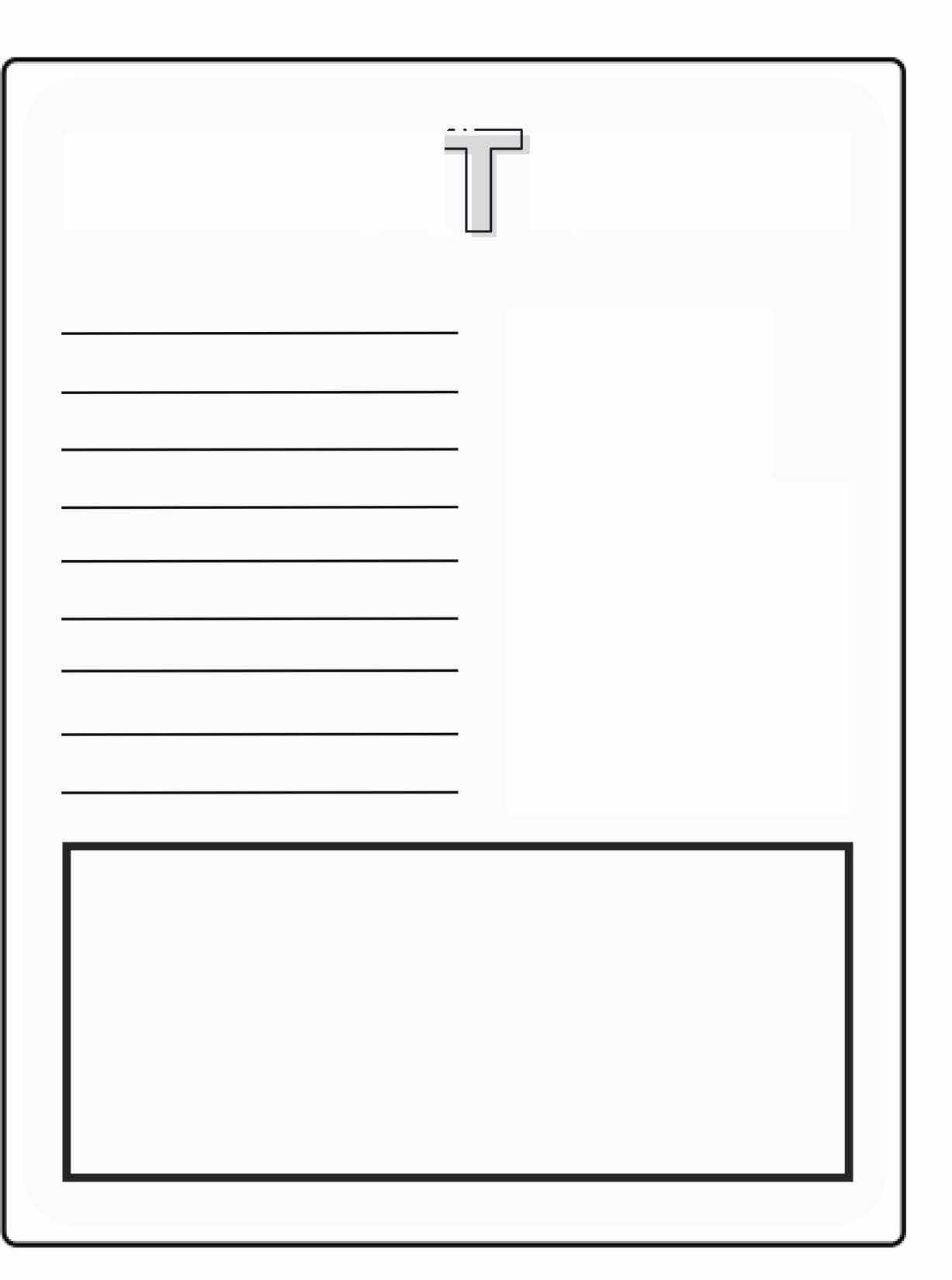



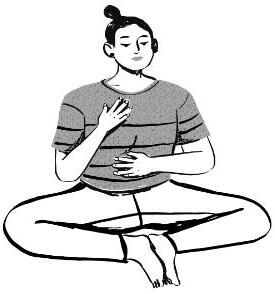
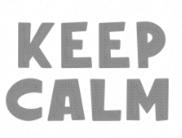












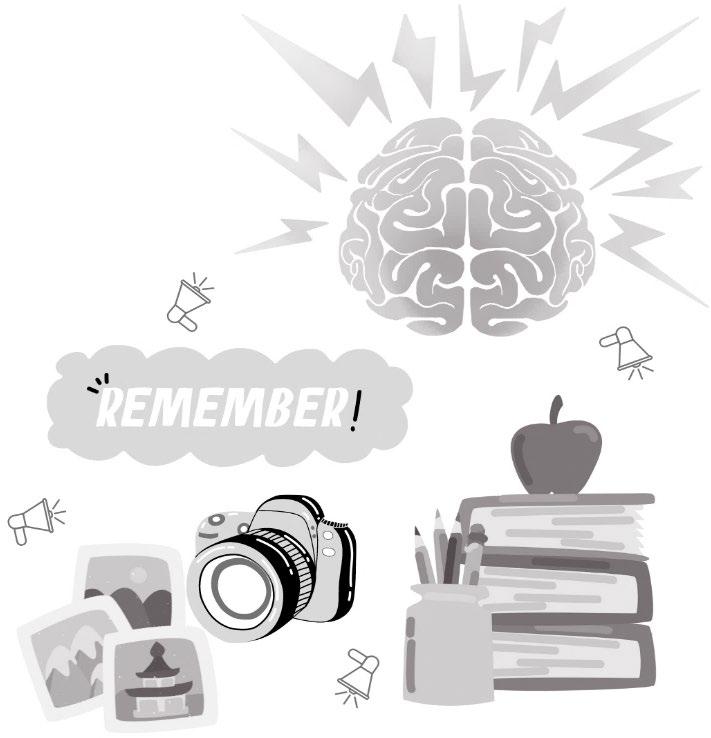



BrainHealthy Jeopardy
Objective
This Curious Brain Activity was created for Girl Scouts of all levels. Discover how the brain works as we think, learn, and play.
Materials
BrainHealthy Jeopardy Discovery Packet
BrainHealthy Jeopardy Board
Jeopardy Answer Key for Troop Leaders
Markers, Highlighters, and/or Writing Tools
Stopwatch
Tape (optional)
Say
1. Today we are going to learn about the brain by playing a game of Jeopardy.
2. We have a Jeopardy board split into 5 different categories. Dark blue is The Upstairs Brain, light blue is The Downstairs Brain, gold is Neurons, red is Brain Facts, and green is Brain Myths.
3 Each column has leveled questions with the value of 100, 200, 300, 400, or 500. Each number is connected to a brain-based question we can answer. Point level-100 is the easiest and point level-500 is the most challenging.
4. The troop will split into teams and take turns selecting a level from one of the categories to try to answer.
5. Use teamwork to decide which category and difficulty level your team wants to select. Let me know by saying something like “Brain Facts for 300 points”. Then, I will read the question and your team will work together to come up with the best answer.
6. The team that chooses the category and level gets to try to discover the correct answer first. If that team gets the answer correct, then they get that number of points.
7. If a team gets the answer incorrect, then the other team gets a chance to try to give the right answer. If this team gets it right, then they get the points.
8. If neither team can get the correct answer, then I will tell you what the answer is, but no team gets the points.
9. Once a category and difficulty level has been chosen, it gets crossed off the Jeopardy board and cannot be chosen again. We will play the game until all the numbers have been crossed off the board
10. Each team will have a BrainHealthy Jeopardy Discovery Packet. This packet contains all the information about the brain that you need to discover the correct answers.
11. Each team has 3 minutes to find and give their answer I will be leading the game of BrainHealthy Jeopardy, and I have all the answers. I can help teams if needed.
Do
1 Give the instructions from the “Say” section above.
2. Show the Jeopardy board.
3 Split the girls up into teams.
4 Give out a BrainHealthy Jeopardy Discovery Packet to each team.
5 Decide which team will go first.
6. Play Jeopardy!
7. Help girls/teams as needed to ensure the game is fun and focused on learning and teamwork.
Reflect
• What is something new you learned about the brain?
• What was something surprising about the brain?
• If you shared one thing you learned from BrainHealthy Jeopardy, who would you share it with and what would you share?
Categories:
The Upstairs Brain.
• 100
o Question: The cerebrum is the part of the brain that deals with o Answer: thinking
• 200
o Question: The cerebrum is the main part of the brain that develops thinking. Name 3 things it helps you do.
o Answer: Any of the following or similar responses would be considered correct: read, learn, speak, walk, run, move your body, play chess, solve a crossword puzzle, figure out the next move in a complex video game.
• 300
o Question: The upstairs brain has a dent that separates it into two halves, like an apple These are known as the left and right
o Answer: hemisphere
• 400
o Question: The upstairs brain, also known as the cerebrum, is made up of how many sections or lobes?
o Answer: four
o Extra 100 Points: Name the four lobes of the upstairs brain OR list which colors represent the four lobes.
o Extra 100 Point Answer: The frontal lobe (red), parietal lobe (blue), temporal lobe (yellow), and occipital lobe (green)
• 500
o Question: The lobe of the cerebrum MOST responsible for thinking and problem solving is right behind your forehead. What is this area is called?
o Answer: the frontal lobe
The Downstairs Brain.
• 100
o Question: The downstairs brain, also known as the feeling brain, contains which 3 structures?
o Answer: brain stem, limbic system, and the amygdala
• 200
o Question: Name one thing the downstairs brain helps humans do every single day.
o Answer: sleep, breathe, emotional reactions, keeps the heart beating, & regulates our temperature
• 300
o Question: Another name for the downstairs brain is the
o Answer: feeling brain
• 400
o Question: Name two strong emotions that are produced by the downstairs brain.
o Answer: anger, fear, disgust, excitement, or shock
• 500
o Question: Why do our brains allow us to feel fear? Why would feeling scared be helpful?
o Answer: Fear/Feeling Scared helps protect us from dangerous situations. Neurons.
• 100
o Question: What is a neuron?
o Answer: Neurons are cells inside the brain.
• 200
o Question: Neurons have a special cover that helps them send messages faster. What is this called?
o Answer: myelin sheath
• 300
o Question: What are the main three jobs of a neuron?
o Answer: 1- receive sensory information, 2-integrate information across the brain, 3- send motor output to the body
• 400
o Question: How fast do neurons send messages?
o Answer: Between 150-200 miles per hour!
• 500
o Question: How would neurons help you be successful at a dance recital?
o Answer: They collect sensory information that the dance is about to begin, then they send information to the brain regions responsible for remembering and coordinating the dance movements, then the brain sends messages to your body and muscles so that the dance can go successfully.
Brain Facts.
• 100
o Question: Choose the right option: You are NEVER vs SOMETIMES too old to learn something new.
o Answer: Never. The brain can learn how to do new things at any age!
• 200
o Question: How many neurons does the human brain have?
o Answer: 100 BILLION!
• 300
o Question: How heavy is the brain once you reach adulthood?
o Answer: The brain weighs 3 pounds (which is about as much as a half-gallon of milk)
• 400
o Question: Most of the human brain is made up of
o Answer: Fat. It is the fattiest organ in the human body, and the fat is super important for your brain to be able to work well.
• 500
o Question: We require this every day to complete activities in school, to watch a show or movie, or to ride i n certain types of cars. Neurons in the brain generate a small amount of ________ when sending messages back and forth
o Answer: Power/electricity. The human brain can generate about 23 watts of power (enough to power a lightbulb).
Brain Myths.
• 100
o Question: True or False? You only use about 10% of your brain.
o Answer: False! It is a myth that you only use 10% of your brain. You actually use all of it, even when you are sleeping. Science has helped us to confirm that the brain is ALWAYS active.
• 200
o Question: True or False? When you drink or eat something very cold and get what we call a “Brain Freeze” It is because part of your brain becomes frozen.
o Answer: False! The sensory receptors in your mouth become very cold and it makes your head hurt. This is why it is known as brain freeze!
• 300
o Question: Which can hold more information? A laptop/iPad or your brain?
o Answer: The brain! Your brain’s storage capacity is considered virtually unlimited.
• 400
o Question: Are there more internet links or neuron connections inside your brain?
o Answer: There are more neuronal connection within the brain than there are internet links.
• 500
o Question: You can practice something a million times, but your brain will stay the exact same. True or false?
o Answer: False! The structure of your brain changes every time you learn, as well as whenever you have a new thought or memory. The more you practice or do a certain action, the easier it becomes to do it over time.
The brain is a major organ of your body. It is in your head and protected by your skull. Your brain is ALWAYS active, even you are asleep. The brain is mushy, like a bowl of spaghetti. By the time you become an adult, your brain will weigh 3-pounds which is about the same weight as half a gallon of milk. Your brain has many functions and different parts. Learn more about your brain below.
From top to bottom, the brain has two main areas: the upstairs (thinking) and the downstairs (feeling).
1. The upstairs brain consists of the upper and largest brain structure called the cerebrum. Like two halves of an apple, the cerebrum can be divided into two hemispheres: left and right
2. The downstairs brain consists of the lower and outer part located in the back of your head known as the cerebellum. Beneath the cerebrum and in front of the cerebellum is the brain stem.

The cerebrum fills up most of your skull. It is involved in remembering, problem solving, thinking, and feeling. It also controls movement.
It is pronounced: sir-ree-brum
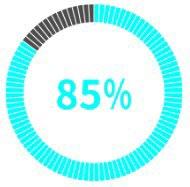
The cerebellum sits at the back of your head, under the cerebrum. It controls coordination, balance, and well learned movements.
It is pronounced: sara-bell-um
The brain stem sits beneath your cerebrum in front of your cerebellum. It connects the brain to the spinal cord and controls automatic functions such as breathing, digestion, heart rate and blood pressure.
The cerebrum makes up more than 85% of the brain’s weight. The cerebrum is the part of the brain that deals with thinking and controls daily activities such as reading, learning, and speech. It also assists planned muscle movements such as walking, running, and body movement.
The upstairs brain and its primary structure, the cerebrum, has four sections called lobes:
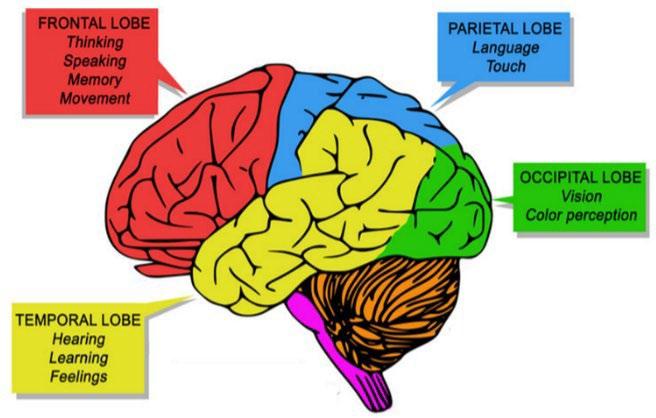
(1) frontal lobe (2) parietal lobe (3) temporal lobe (3) occipital lobe
Each of the lobes of the cerebrum controls specific abilities as seen above.
The cerebrum is the main part of the brain that controls our thinking. It helps you play chess, solve a crossword puzzle, or figure out your next move in a complex video game.

MOST thinking happens in the frontal lobe. If you place your four fingers on your forehead, the area behind your hand is where your thoughts are formed!
The frontal lobe is a very important area of the brain because it helps with decision-making, problem-solving, and planning. The frontal lobe also helps the development of cognition, language processing, and intelligence.
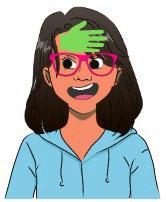
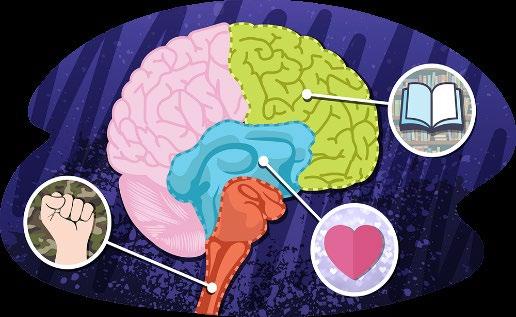
The downstairs brain is often referred to as the feeling brain. It contains the brain stem, limbic region, and the amygdala.
The downstairs brain is well developed from birth and is responsible for:
• Basic bodily functioning such as breathing, blinking, heart beating, flinching, digestion, waking up, etc.
• Flight, flight, and freeze response in stressful situations.
• Producing strong emotions such as anger, fear, disgust, or excitement.





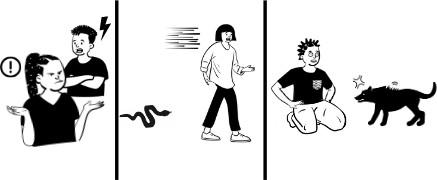

The upstairs brain is the THINKING part of the brain. It is responsible for planning, imagination and creativity, reasoning, problem solving and sound decision making. The cerebrum makes up the upstairs brain and has 4 lobes or sections that all have different jobs. The frontal lobe of the cerebrum is still developing into your late 20’s!
The downstairs brain is often referred to as the FEELING brain, as it is the earliest developing brain region and is responsible for our most basic functions related to survival, such as breathing. The downstairs brain contains the brain stem, the limbic region, and the amygdala. These structures are responsible for strong emotions, like fear, that keep us alert so we can respond to stressful or scary situations.
While the upstairs and downstairs brain areas perform different roles, they connect due to special cells called neurons.
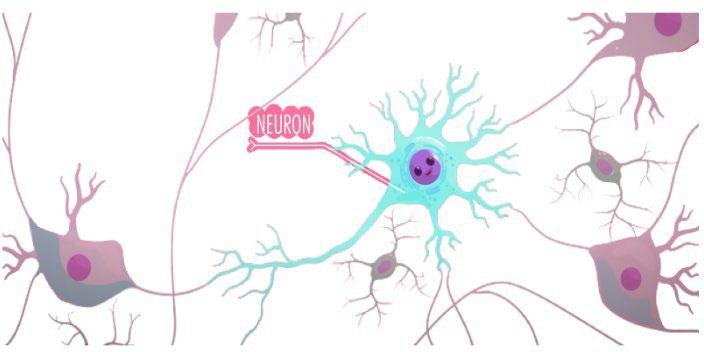
Your brain contains about 100 billion microscopic cells called neurons—so many it would take you over 3,000 years to count them all.
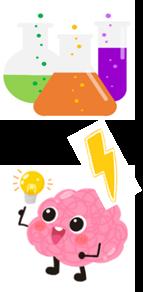
Whenever you dream, laugh, think, see, or move, it’s because tiny chemical and electrical signals are racing between these neurons along billions of tiny neuron highways. A single neuron generates a tiny amount of electricity, but all your neurons working together can generate enough electricity to power a low-wattage light bulb.
Believe it or not, the activity in your brain never stops. Countless messages zip around inside it every second like a supercharged pinball machine. Your neurons create and send more messages in a single day than all the phones in the entire world. Neurons send messages at a speed of 150-200 miles per hour A special insulating layer of the neuron called the myelin sheath boosts the speed of how quickly messages are transmitted.
1st They listen for sensory messages about what is going on in your environment.
2nd When they receive a message, they then send that message to the correct area of the brain where it can be processed correctly (like a computer).
3rd They help you respond to your environment so that you can move your body as needed.
Imagine you are at a dance recital.
1st Your eyes, ears, and sense of touch send SENSORY INPUT telling your neurons that the curtain just rose, and the music is beginning. You now need to start dancing the routine you spent weeks learning.
2nd Neurons send the SENSORY INPUT to the areas of the brain needed to dance your routine. In this case it would go to areas responsible for memory, coordination, muscle movements, and probably emotions! Those areas INTEGRATE all the sensory input super-fast because you want to start dancing at the right moment.
3rd The areas of the brain that INTEGRATED the information send MOTOR OUTPUT or muscle messages to the rest of your body. You dance your routine and get a standing ovation at the end. Way to go!
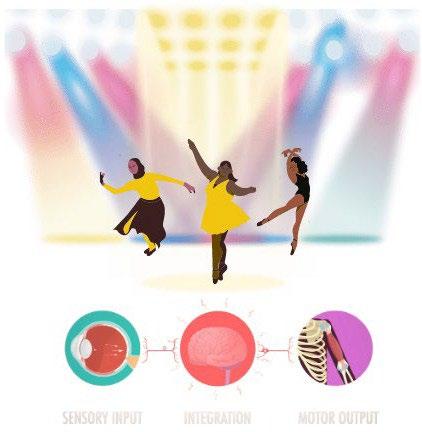
When you learn, you change the structure of your brain.
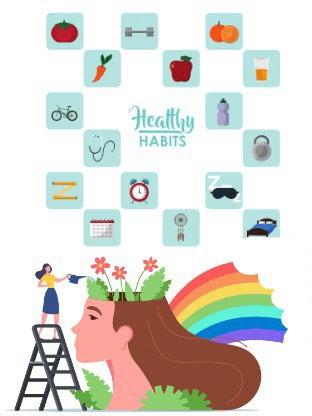
Riding a bike seems impossible at first. But soon you master it. How? As you practice, your brain builds its neural pathways for bike riding just like if you walked the same dirt path each day to school. Over time, the path becomes smooth from your footprints, making it easier to walk. It also becomes familiar, and you can take the route without really thinking about it. Learning to ride a bike happens the same way!
In fact, the structure of your brain changes every time you learn, as well as whenever you have a new thought or memory. The more you practice or do a certain habit, the easier it becomes to do it over time because you grow neurons dedicated to making that set of actions more likely to be successful. This is called neuroplasticity.
Brain Smarts
Objective
This Creative Brain Activity was created for Girl Scouts of all levels. Discover the special ways the brain makes us unique - in the ways we like to play but also in our individual strengths and abilities.
Materials Worksheets
Coloring Tools
Option 1: Play Profile
Say
1. Play is something we do throughout our life. As a baby, it helps us learn how to talk and move our body. As we get older, it helps us learn to work with others and make connections in our brain that helps with decisions and planning.
2. There are so many different ways to play. Research shows that even adults do it! It helps us all feel calm and connected.
3. We are going to explore different ways to play, so you get to know more about yourself and your friends.
4. Pick your activities and think about how you are already doing this and when you can do this more. Make your plan!
Do
1. Explore our unique Play Smarts to learn more about yourself Get creative and think how you might use this when you’re hanging with friends.
2. Provide the Play Profile Worksheet to the girls
3. Have them pick 2-3 of the activities that they MOST enjoy by coloring in their worksheet
4. Color in the activities and think about what their play looks like (e.g., collecting Pokémon cards, playing sports).
5. Share your page with the group and reflect on what you discovered about yourself.
Option 2: Your SMARTS
Say
1 Did you know that smarts aren’t just for school? You use your smarts in sports, with friends & family, when you ’ re creating, and with so many other things in your life.
2. Today we will explore your different smarts. Think about what you enjoy doing and what you're good at.
3 Knowing our smarts can help us make decisions with how we use our time and the strengths we share with others. Our smarts also help us decide what we want to be when we grow up!
4 FUN FACT(optional to share with older girls): Our brain is made up of four lobes: frontal, occipital, temporal, and parietal (feel free to use your hand to indicate where each lobe is located on the head). Each lobe has different functions, and they work together with other lobes to impact our abilities or smarts. For example, the frontal lobe helps with our executive functions such as planning and organizing. What is a Brain Smart you might have that requires those skills? Let's research the lobes of the brain (see resources), and then map out our smarts based on what each lobe helps us do!
Do
1 Provide the materials to the girls
2. Use the coloring tools to decorate the brain. Draw pictures, write out your strengths, and display your smarts!
3 Optional (for older girls): Create a legend that includes the four lobes of the brain, using the example provided in the following pages. Then, indicate which smarts the different lobes help you to do.
4. BONUS: Have the girls research and explore different jobs that work closely with the brain - such as a neuroscientist, a psychiatrist, a cognitive researcher, or any others. Brainstorm the different smarts a person might need to succeed at the job.
Reflect
• What part of this Creative Brain activity do you want to bring into your daily life?
• How can you share this with your friends and use what you learned to build relationships?
Resources
• The Lobes of the Brain: https://qbi.uq.edu.au/brain/brain-anatomy/lobes-brain
Example Optional Activity: Learn about the lobes of the brain and map your Brain Smarts to each lobe!
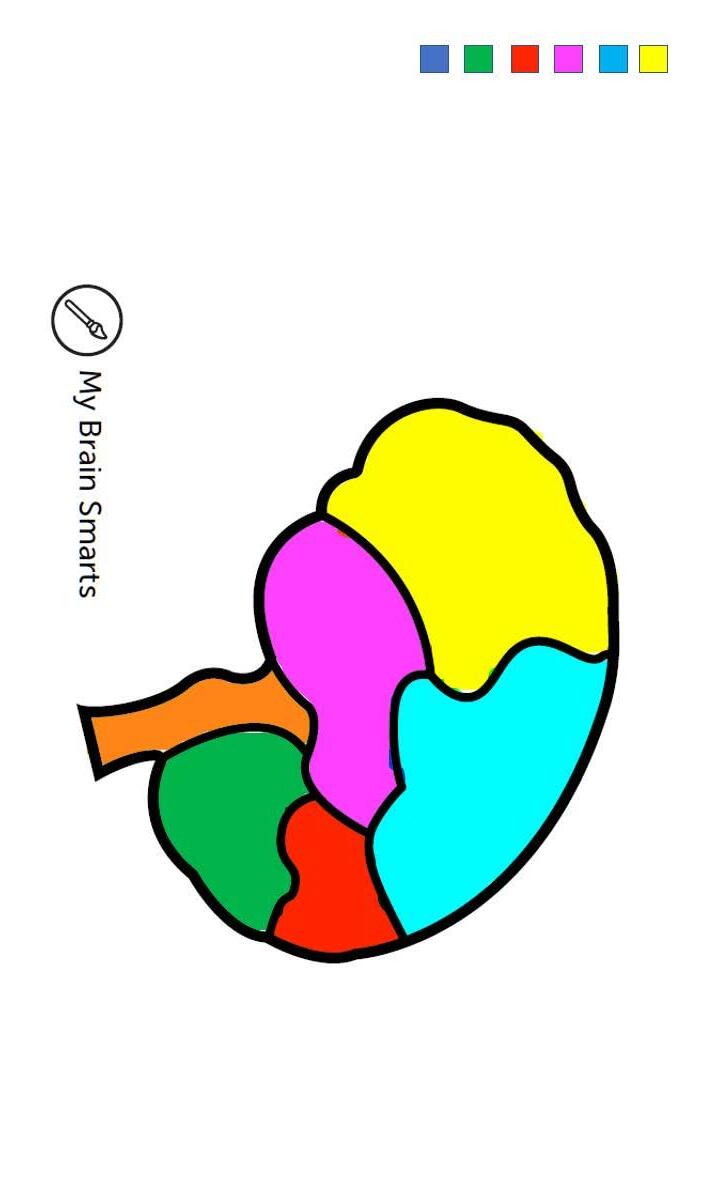
Frontal Lobe Smartsmath, dancing
Parietal Lobe Smartssculpting, reading Temporal Lobe Smartsplaying the flute, learning French Occipital Lobe Smarts: painting, photography
Build a Neuron
Objective
This Creative Brain Activity was created for Girl Scouts of all levels. Discover more about neuroplasticity, the brain's ability to make new connections and strengthen existing pathways.
Materials
Pipe Cleaners (5 different colors)
Beads
Scissors
Say
Younger Girls
1. Do you think your brain is more like a rock or clay? Your brain is like clay - it’s moldable and can change!
2. You can change your brain, especially when you’re learning something new and being creative.
3. This happens because of special cells in your brain called neurons. They create different pathways for information to travel through - ultimately changing your brain over time!
4. What’s something you learned to do in the past? Maybe dancing, riding a bike, or writing? When you first tried, it may have been hard to do. The more you do it, the easier it gets because of the new pathways your brain is making.
5. Today let’s make our own neurons and strengthen our creative pathways!
Older Girls
1. Who has heard of neuroplasticity?
2. Neuroplasticity is your brain's ability to adapt and change based on how you use it. Learning something new, being creative, and intentionally practicing new skills are ways we can harness neuroplasticity.
3. Today, we will make a neuron and discuss neuroplasticity. Neurons are uniquely shaped cells that allow connections and information to be transmitted by neurotransmitters and electrical signals.
4. One of the most exciting components of the neuron is themyelin sheath Myelin is a special insulating layer around nerve cells. This layer drastically increases the speed that electrical signals are sent between neurons. It’s like the difference between a train and a rocket ship This makes the myelin sheath important for neuroplasticity.
5. What’s something you learned to do in the past? Maybe driving a car, learning a TikTok dance, speaking a new language, or playing an instrument. When you first tried, it may have been hard to do. The more you do it, the easier it gets because of the new pathways your brain is making.
6. As we make our neurons, take some time to think about pathways in your brain that you’ve strengthened through intention and time.
Do
1. Use pipe cleaners to discover how your brain makes and strengthens new connections.
2. Take two pipe cleaners and twist them together.
3. Roll the top of the pipe cleaners into a circle, “cell body.” It should look like a lollipop.
4. Cut a different colored pipe cleaner into 4 pieces. Loop these pieces onto the top of the “cell body”. These are “dendrites”.
5. Then, cover your axon (the straight pipe cleaner) with myelin sheath by either wrapping a different colored pipe cleaner around it or adding beads.
6. Instruct the girls to wrap another pipe cleaner or add more beads - you just made this connection stronger!
7. Lastly, tie a small piece at the end of your axon. This is the “axon terminal” - this is where information gets sent out.
8. If you take myelin sheath off, then the connection is going to weaken.
9. Make more than one per girl or have members of the troop put theirs in a line to show how a new pathway starts to form.
Reflect
• What did you learn about your brain that was new?
• What’s the most exciting part about neuroplasticity?
• What new activities can you learn to create new pathways in your brain?
Resources
• Pipe Cleaner Activity: https://ntp.neuroscience.wisc.edu/wp-content/uploads/sites/81/2018/09/WSF18_Pipe-Cleaner-Activity.pdf
• Brain Facts: http://www.multiculturalmotherhood.com/2017/07/learning-about-brain.html
• Adolescent Brain: https://www.youtube.com/watch?v=0O1u5OEc5eY
Compassion Garden
Objective
This Courageous Brain Activity was created for Girl Scouts of all levels. Discover the joys of gardening and shift your perspective to bring new life to items we usually discard.
Materials
Recycled cardboard (biodegradable) egg carton
Seeds from used produce Soil Water Sunlight Scissors
Say
1. Have you ever helped an adult with cooking? If you used fresh vegetables in the recipe, you probably tossed out the “scraps” without a second thought. Did you know those “scraps” could be reused?
2. Most vegetables can be regrown from their seeds. In this activity, we will collect seeds from everyday food items like tomatoes, bell peppers, cucumbers, and apples.
3. When we regrow foods from their seeds, we create less waste, show compassion for the environment, and produce even more foods. Plus, gardening can be a great activity to promote brain health by reducing stress and even improving focus.
4. We can also show compassion for each other during this activity. If you have extra egg cartons or seeds from your home, bring them to share with the group!
5. We will work together to care for and regrow the seeds — to create a brand-new garden of our own!
Do
1. Collect unused seeds from produce after the fruit or vegetable has already been used.
2. Reuse cardboard egg cartons to serve as containers for your seeds. By using biodegradable containers, you can cut apart the sections and plant them in the ground once they reach the seedling stage.
3. Cut off the lid to the egg carton so that only the sectioned bottom portion remains.
4. Poke tiny holes into each section for proper drainage.
5. Fill each section with soil.
6. Place one seed into each section of the egg carton. Note: if you are using a variety of different seeds, create little flags or markers to indicate which seed is placed in each section.
7. Place the egg cartons in a sunny area on top of a tray or pan to catch any residual water.
8. Keep the soil watered. Watch your seeds transform over time!
Reflect
• What are ways you experienced the feeling of compassion during this activity?
• Let’s use our brains flexibly: what else from our surroundings might be reused or repurposed like those seeds and egg cartons?
Resources
• Brain Benefits of Gardening: https://www.pbs.org/parents/thrive/nature-as-stress-relief-for-kids
Objective
This Courageous Brain Activity was created for Girl Scouts of all levels. Discover how a daily gratitude practice can impact both mood and outlook.
Materials
Today I Am Grateful For Gratitude Tracker Writing Tools
Say
1. Practicing gratitude gives us feel-good chemicals in our brains like dopamine and serotonin. Gratitude can help us feel less stressed, happier, and more resilient.
2. Let’s do an experiment! For one week, each of us will record specific things we are grateful for. Examples might be:
a. I’m grateful for my teacher explaining how to do a tough math problem.
b. I’m grateful for my neighbor who always says “Hello.”
c. I’m grateful for our military for keeping us safe.
3. We will also track our mood as we go throughout the week. I wonder what impact being grateful will have on us all?!
Do
1. Print copies of the gratitude tracker, or create your own using a notebook or journal.
2. For one week, log two to three things that make you feel grateful about each day. Try to log each day around the same time.
3. Be specific. Instead of saying “I’m grateful for my mom”, include details. For example, that might be “I’m grateful that mom packs me healthy snacks each day.”
4. Aim for variety. Boost your brain’s ability to rewire itself by thinking of new events or experiences. Give it some time — you may need to close your eyes and slowly rewind through your day to remember different moments that brought on gratitude.
Reflect
• What did you learn about yourself or others while practicing gratitude?
• Were there times when practicing gratitude was more challenging. Let’s discuss
• What changes did you notice about your mood and brain health after the week-long gratitude practice?
Resources
• Gratitude and the Brain: https://greatergood.berkeley.edu/article/item/how_gratitude_changes_you_and_your_brain
• Go deeper, for teens: https://ggsc.berkeley.edu/images/uploads/GGSC_Gratitude_Curriculum_MS_HS.pdf
Courageous Connection
Objective
This Courageous Brain Activity was created for Girl Scouts of all levels. Discover ways to boost neuroplasticity and inspire courage in the face of tricky situations.
Materials
Tape or chalk to create a square
List of example scenarios
• Planning a birthday party
• Going out to a restaurant
• Attending a sleepover
• Going on a date/talking to a crush
• Going to a school dance
• Performing in front of an audience
• Giving a speech
• Standing up for yourself
• Attending a new school
Say
1. Have you ever felt nervous, uncertain, or just full on stressed about a social situation?
2. Some situations seem much easier for us to manage than others. In this activity, we will discover the situations that may feel outside (or inside) our comfort zones.
3. At the beginning of each round, everyone should be standing inside the square.
4. When I read out each situation, stay inside the square if the situation is one that you would feel comfortable handling.
5. Step outside the square if you would most likely feel nervous or uncomfortable in that situation.
6. After girls have decided whether to stay in or step outside of the square on each round: Now, we will experiment to see if courage and confidence can be passed along. Those who are inside the square, partner with a person(s) outside the square.
7. Once you’ve partnered up, those who feel comfortable must flex your thinking to consider how that other person must feel AND offer some ideas on how they can feel more courageous in that situation.
8. Once each girl who is outside of her comfort zone in that situation has been given some advice or courage for better handling it, she can step inside the square again.
Do
1 Section off a part of the floor to create a large square. The square should include enough space for the entire group to stand in - approximately 8'x8' or larger depending on troop size You can label the square as “My Comfort Zone” if you’d like
2. Review the attached list of scenarios, using discretion about which are most appropriate for your troop The group can also generate situations to add to the list.
3. Pick 5-6 scenarios randomly and read them aloud one-by-one, with each scenario representing one round Have each group member consider whether a given situation would be comfortable or uncomfortable for them
4 As you read aloud each situation, have those who would feel comfortable in that situation stay inside the square. Those who would feel uncomfortable should step outside of the square.
5 Have girls partner up. If someone is comfortable in the given scenario, they should connect with a person(s) who is uncomfortable by offering encouragement.
6. Get creative and have fun with this! Partners can share different postures that promote courage, inspirational statements, use humor, and brain-healthy strategies.
7. The ultimate goal is that each girl who feels uncomfortable in that situation (i.e., standing outside the square) will receive social support, helpful tips, or a strategy to help her move to standing inside of the square.
Reflect
• What did you discover about your Courageous Brain during this activity?
• How might you use what you’ ve learned to support someone you know in getting out of their comfort zone?
Resources
• For younger girls. Challenges Grow Your Brain: https://www.youtube.com/watch?v=g7FdMi03CzI

Cultivate brain health by being CURIOUS, CREATIVE & COURAGEOUS
1. Emotion Fortune-Telling
2. Soundtrack of You
3. BrainHealthy BINGO
4. Colors of You Bracelet
5. Out-of-the-Box Play
6. How Many Ways...
7. Brain Boost Jars
8. Flip Your Lid: The Cup Challenge
9. Sens-itive Minds
Emotion Fortune-Telling
Objective
This Curious Brain Activity was created for Girl Scouts of all levels. Connect with others and predict the complex ways our emotions can show up in everyday life experiences.
Materials
8 ½ x 11 sheets of paper
Scissors
Ruler
Markers or crayons
Say
1. Our emotions are complex and layered, with many coming to the surface depending on what’s happening to us.
2. In this activity, we will create an emotion fortune teller using a blank sheet of paper. This fortune teller will help us predict how human emotions can be layered or double-dipped.
After creating the fortune teller…
3. Now, we will take turns operating the fortune teller to get TWO different emotions. Once we have two emotions, we will talk about how these two could be at play in a social situation.
4. For example, if I didn’t notice a water spill and suddenly slipped down on the floor. I might feel both surprised and afraid.
5. Why might I feel surprised? (ask for a volunteer to answer)
6. Why might I feel afraid? (ask for a volunteer to answer)
7. Yes! What you just described are layered or double-dipped emotions!
8. Let’s do a couple rounds to see what situations you all can come up with that lead to two emotional reactions.
Do
Creating the Fortune Teller
1 Watch the video below for a quick tutorial.
2. Cut an 8 ½ x 11 sheet of paper into a square shape. An easy way to do this is by folding it down into a square (you could use a ruler to measure this!), creating a crease, and then cutting off the excess.
3. Fold the square in half on the diagonal, creating a triangular shape.
4 Unfold the paper. Now, turn it on a 90-degree angle and then fold the paper in half - with the top section of the paper meeting the bottom. It should now have four intersecting lines coming from the middle.
5 With the paper folded in half, fold the bottom corner in towards the middle of the paper. Create a crease with your finger.
6 Turn your paper another 90 degrees and fold the other bottom corner in towards the middle, creating another crease.
7. Turn your paper again and keep folding the bottom in towards the middle until you have a square with four triangles.
8 Flip the paper onto the other side and repeat the process: folding each bottom corner in towards the middle and then rotating the paper.
9. Number the triangles 1 through 8 in ascending order around the 8 smaller triangles you’ve created.
10 Choose 4 colors to label the front side of your fortune teller.
11 Unfold the flaps of your triangles on the back side and write down 8 different emotions. Some examples are happy, sad, afraid, disgust, surprise, anger, embarrassed, and worried.
12. Close the flaps once you’ve written out the 8 emotions.
Using the Fortune Teller
1. Pair up with another person (either troop member, classmate, or family member) or work as a group and rotate who is in charge of the Fortune Teller.
2. Turn the fortune teller upright with the colors facing you and slide your fingers beneath the squares.
3. Have your partner(s) choose a color and then move your fingers beneath the fortune teller as you spell out that color (e.g. B-LU-E).
4. Then, choose a number, and move your fingers that amount of times. Unfold the flap for the number they picked. Note the emotion that is labeled beneath the flap.
5. Repeat this process until you have two emotions.
6. Brainstorm together a situation when a person might feel those two emotions at the same time.
Reflect
• What emotions did you have difficulty relating to in the different situations? Which emotions were easier to empathize with?
• How can you continue using the emotion fortune teller in the future?
Resources
• Example video: https://www.youtube.com/watch?v=LdRXrp2CUIs
Objective
This Curious Brain Activity was created for Girl Scouts of all levels. Connect to see the impact music can have on you and your troop
Materials
Device to play music
Playlist (optional)
Soundtrack of You Rating Worksheet
Say
1. Today we’re talking about music and the brain. Listening to music can relax our brain, give us energy, or change our mood.
2. Each person has their own style of music, kind of like clothes. There might be a specific song, artist, or type that you think is best!
3. Choose the top 3 songs/types of music you like and think about how it impacts your brain! Then, we will share and learn more about what we all like!
4 Afterwards, we will vote as a troop for our favorites.
5 BONUS: Introduce a new song you discovered during this activity to a friend later.
Do
1. Write down the 3 songs, artists, or types that the girl enjoys on the worksheet.
2 Write down or draw the emotion or experience you have when listening to each song.
3 Have girls share about their songs and the impact it has on their brain, then as a troop vote on different ones that lead to the following: relaxation, happiness, energy, and good memories.
4. Compile all those songs together and your troop now has its own special soundtrack Make a playlist, write it down, and share with others!
Reflect
• How does music impact your mood differently than others?
• Which song or type of music seemed to affect your brain and body the most?
• When is a time you could use music to boost your mood or help you feel calmer?
Ways I describe
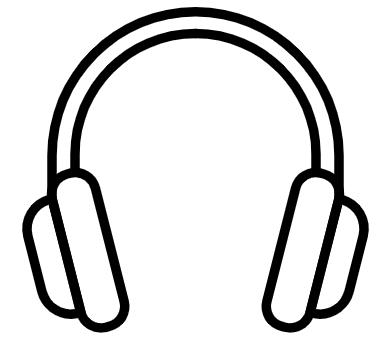
BrainHealthy Bingo
Objective
This Curious Brain Activity was created for Girl Scouts of all levels. Connect and spark conversations about how stress impacts the brain and the unique activities each person uses to build resilience
Materials
BrainHealthy Bingo card
Writing or Coloring Tools
Say
1. Though we all experience challenges in our lives, how we respond and take care of our brains during those moments is based on each individual
2 This is a fun activity to better get to know others in the group and how each of us deals with stress.
3 Connect with others by asking questions or sharing about yourself to find out the unique ways each of us likes to cope during challenge moments
4 If a person uses a given brain-healthy activity on your sheet, have them sign the square.
5 Get 5 squares across, down, or diagonally and yell “BINGO!” The goal is to get 5 unique signatures.
6. BONUS: After we do this within our own troop, I challenge you to take an empty sheet and try to have friends, family, and other people you interact with share their own way they take care of their brains.
Do
1. Distribute a Bingo card and writing tool to every person participating in the activity. This activity can be completed within a troop, classroom, or family.
2 Allot 10-20 minutes, depending on the size of the group, for each person to go around within the group and chat with one another.
3 Connect with others by asking questions or sharing about yourself to find out the unique ways they manage their emotions and stress.
4 If a person uses a given brain-healthy activity on your sheet, have them sign the square.
5. Get 5 squares across, down, or diagonally and yell “BINGO!” The goal is to get 5 unique signatures, but this may not be possible in a small group setting.
6 Continue until the given time runs out
7. Give girls extra sheets after the activity ends. Prompt them to take it into their community to see what brain-healthy activities others outside the troop like to use.
Reflect
• When were moments this activity allowed you to learn something new about a person in the group?
• This card included helpful ways of managing our human emotions during challenge moments What are some less helpful or harmful ways you can think of?
Objective
This Creative Brain Activity was created for Girl Scouts of all levels. Connect by engaging creative thinking to reflect on special memories and transform them into colors that represent those closest to you.
Materials Paper
Pencil/pen Tape
Elastic Cord Beads
Say
1. We all have unique personalities and memories. Today we are going to use colorful beads to represent this.
2. When we think about our thoughts and memories, we access information that is stored in our brain like a computer file or a web.
3. Your brain makes categories and associations about information and experiences in the world. This helps you be able to store facts, feelings, and information your senses pick up on.
4. By choosing colors to represent your thoughts in a creative way, you are both accessing your memories and challenging yourself to think in a new, creative way.
5. Use your memory to think of a special person, place, or moment in your life that you can transform into vibrant colors
6. On your paper, draw or write what is inspiring you for the colors you’re choosing. Hold on to this because we’re going to share!
Do
1. Decide what colors you are using and what each color represents
2. Pick out the beads you will be using
3 Measure your wrist and cut the cord slightly larger so that you have space to tie it
4 Tape the elastic cord on the table so that you can more easily add the beads to the cords without them falling back off.
5. Tie off the cord once you’ve put all the beads you desire onto the bracelet.
6 BONUS: Make the bracelet to share with the person that inspired you, or someone who was involved in the memory your bracelet represents.
Reflect
• Who is someone you could make one of these bracelets for?
• How can you use your Creative Brain to represent yourself, your memories, and the people around you?
• What is a new creative outlet you can use to express yourself?
Out-of-the-Box Play
Objective
This Creative Brain Activity was created for Girl Scouts of all levels. Connect as you engage with others and build new brain connections by trying out one (or all) of the options below
Materials
A ball or popcorn
Space to move around Clothes that you can dress up with (e.g., hat, jacket, sunglasses, etc.)
Say
For Younger Girls:
1. Play helps us tap into creativity. We do this at all ages.
2. One of the best ways to play is with others while getting out of your comfort zone! Today we are trying new ways to play and have fun.
3. You might feel energized, inspired, or excited. This is because your brain rewards you when you get creative and play! When you solve problems, laugh, and have fun your brain rewards you.
4. Optional: Tie in “Your Brain is Such a Character” to include more information about neurotransmitters.
For Older Girls:
1. Play helps us tap into creativity. We do this at all ages. One of the best ways to play is with others and to get out of your comfort zone! Today, we will try new ways to play and have fun.
2. You might feel energized, inspired, or excited. This is because your brain rewards you when you get creative and play! When you solve problems, laugh, and have fun your brain rewards you.
3. The two main neurotransmitters that are associated with play are Norepinephrine and Dopamine.
4. Who has heard of these? What do you know about them?
5. Norepinephrine gives us energy for our attention, action, and learning! It also helps our brain make new connections and strengthen them (through neuroplasticity!).
6. We also have dopamine, which rewards our brain when we discover, do activities we like, and complete projects. Without this neurotransmitter rewarding us, it would be hard to be motivated and we wouldn’t have as much enjoyment in our lives.
7. Pay attention to your thoughts and how your body feels throughout this activity.
8. Optional: Tie in “Your Brain is Such a Character” to include more information about other neurotransmitters.
Do
Connect with your troop or family by trying one of the out-of-the-box ways to play. Feel free to be creative and put your own spin on the activities.
Option 1: Catch a Laugh
1. Get either a ball or a bag/bowl of popcorn. The people in the group will take turns when either they have a piece of popcorn or the ball.
2. The first person goes, they know it's their turn by getting the ball/popcorn, do a funny face, telling a joke, or anything that you think will make others laugh.
3. The first person to laugh either gets the ball thrown at them or a piece of popcorn if you’re comfortable with the food in the space.
4. Go around and make sure everyone gets a turn!
Option 2: Secret Handshake
1. Pair up and come up with a secret handshake to do.
2. You can think of different handshakes that represent different moods or times of the day
3. These handshakes are like a secret code for the people pairing up together
Option 3: Shifting Statue
1. The group will use the dress-up items on a troop member person. Set a 2 minute timer.
2. After dressing the “statue” up, the “sculptors” go into the other room for less than 30 seconds.
3. The “statue” will change 1 small thing either the clothing items or the position they’re in.
4. The “sculptors” will come back in the room and try to figure out how the “statue” shifted
5. Take turns until everyone has had a chance to be the “statue”
Reflect
• How do you think these new activities impacted your brain?
• What activity made you feel the most connected?
• What are other games or activities you know of that you think you could do in a new way?
Resources
• The cognitive benefits of play: Effects on the learning brain https://parentingscience.com/benefits-of-play/
• Brains at Play | NPR Ed https://www.youtube.com/watch?v=4Z_hMYGAQ6k)
How Many Ways…
Objective
This Creative Brain Activity was created for Girl Scouts of all levels. Connect as a group by showing innovation in the ways you use everyday items or complete simple tasks.
Materials Paper
Writing Tools
Common items from the home (e.g paper, fork, a book, a ball)
Your body
Say
1. Every day we travel to different places, use items to complete tasks, and move our bodies. Today we are challenging ourselves to think about how many ways we can do these common activities
2. Let’s think about how many different ways we could use a fork, move your body across the room, and pass a ball!
3. For example, we could use a plastic cup for drinking, but we might also use it to hold pencils, we could throw it like a ball, use it as a fidget and spin it, or use it like a drum.
4. When we challenge ourselves to be possibility thinkers, it trains our brain to be open and think creatively.
5. Remember, all ideas are welcome. Our challenge is to come up with as many different ideas as we can.
Do
1. Split the troop into groups of 2-3 people.
2. Give each group a piece of paper and something to write with.
3. Provide each group with 1 or 2 of the common items you have gathered.
4. Set the timer for 3 minutes, and have them write down as many ideas as they can within that time
5. Once the timer goes off, rotate the items to a different group and reset the timer for 3 more minutes
6. Ensure that each group gets a chance to work with the different items and come up with ideas.
7. Walk around the groups and talk with the girls about the different ideas their brains were able to generate
8. After seeing who came up with the most ideas, have each group share their most creative ideas.
Reflect
• How did you push your brain to be more creative?
• What is something that surprised you about coming up with these new ideas?
Resources
• Creative Thinking: https://www.youtube.com/watch?v=cYhgIlTy4yY
Objective
This Courageous Brain Activity was created for Girl Scouts of all levels. Connect by sharing brain-healthy encouragement and ideas with others in your schools, homes, or communities.
Materials
Recycled jar or container (help one another by supplying jars if you eat pasta, pickles, or jam!)
Printed Brain Boost Jar labels (scale to print at 50%)
Strips of paper or notecards
Writing and Coloring Tools
Decorative items such as stickers, ribbon, or gems
List of example statements:
• Taste a new flavor of ice cream this week.
• Read a new story before bedtime.
• Smile at yourself in the mirror for 5 seconds. How do you feel?
• Hey, you! Yes, you! You are amazing!
• Walk a new route to school.
• “Courage starts with showing up and letting ourselves be seen.” -Brene Brown
• Pause. Take three deep breaths before going on with your day.
• Make one food choice that boosts your brain health today. What will you do?
Say
1. Everyone has a brain, but we may not always have good ideas ready for helping us take good care of our brains.
2. In this activity, we will work together as a group to create Brain Boost jars for one another, our friends, or family.
3. We will hopefully spread brain health to others so that they, too, can realize their brain’s limitless potential.
4. Let’s each choose at least one person Brainstorm different ways you might describe this person. What are they good at? How do they impact your life in a positive way? Tell them with kind words! Some examples are provided.
5. Now, write out some encouraging words, compliments, or fun brain-healthy facts we’ve learned while working towards our BrainHealth patch.
6. You may notice that as you think of someone you care for and do this act of kindness, your brain gets a boost, too!
Do
1. Think about a person in your troop or local community that can benefit from a brain boost — that is, a thoughtful compliment, a helpful tip, or an encouraging quote.
2. Write out different quotes, compliments, or tips on strips of paper. Fold each one so what’s inside can’t be read.
3. Include uplifting or empowering quotes to strips of paper, too.
4. Use creativity to decorate the jar. You can use the attached Brain Boost labels or make labels of your own.
5. Add more decorations based on the person or group you jar. For example, if you are making one for your friend who loves dance, you might add in a dance-related boost and decorate the jar with dance-related stickers.
6. Add the folded strips of paper to the decorated jar.
7. Deliver your Brain Boost jar to the lucky recipient.
Reflect
• How did you decide on the person(s) who would most benefit from your Brain Boost jar?
• What impact might your Brain Boost jar have on the person?







Flip Your Lid: The Cup Challenge
Objective
This Courageous Brain Activity was created for Girl Scouts of all levels. Connect creatively as a team to engage the Upstairs Brain when managing a challenge.
Materials
10 Recyclable plastic or foam cups (per group)
String or yarn
Large Rubber bands
Table
Say
1. Stress can sometimes get in the way of us reaching our goals. Stress happens when our Downstairs Brain – the feeling brain –takes over our Upstairs Brain – the thinking brain. It can make it hard for us to make choices or come up with solutions.
2. But did you know our brains can think creatively to overcome challenges when we work as a team?
3. Here’s a demonstration: (do while explaining) Each person grabs a piece of string using only one hand (both hands for younger groups). Pull your string along with your teammates to expand the rubber band, pick up, and stack the cups into the shape of a pyramid.
4. Remember, your goal is to stack the cups without touching them with your hands.
5. We are not competing with one another but showing how we can all use our Upstairs thinking Brains together as a team.
6. Beware! I may change the instructions at any time. How will you use your team brain powers to reach the goal?
BONUS: (change the complexity level 3-5 minutes into the exercise)
For Older Girls:
1. Let’s see how our brains help us adapt to a different challenge. Work as a team to stack the cups — without talking! You can use signals, gestures, and head nods only.
2. Another challenge for you — one member must keep their eyes shut (or use a blindfold). The rest of you must guide her using clear instructions.
For Younger Girls:
1. Let’s see how our brains react to a challenge. Place one of your hands behind your back. Now, stack the cups by only using one hand to pull the string.
Do
2. Divide the girls into small groups of 4 to 5 people per group.
3. Give each group 10 cups, 4-5 pieces of string/yarn, and 1 rubber band. Tie the very end of each string onto the rubberband to create a tool for picking up the cups. See the attached video below for guidance.
4. As a demonstration, stack the cups into a pyramid shape to indicate how the result should look. Un-stack the cups, leaving them upside down on the tabletop.
5. Give each girl a piece of string to hold. Each of their strings should be tied to the rubber band. For example, if there are 4 people in a group, there should be 4 strings tied to one rubber band.
6. Demonstrate how the girls must pull their strings in opposite directions from one another, using only one hand (both hands can be used for younger groups) to open the rubber band wider. Doing this together as a group, they can then open the rubber band wide enough to capture and pick up a cup.
7. Once everyone understands how the challenge is done, share aloud the timeframe the groups have to stack the cups.
8. Repeat for a second round by increasing the difficulty, such as a shorter time period or one of the challenges suggested below.
Reflect
• How did your Downstairs Brain react to the stressful challenge?
• What was the trickiest part of the activity? How did your Upstairs Brain help you to succeed?
• What were some creative ways you worked together as a team?
Resources
• How to Video: Cup Stacking- Team Building Exercise https://www.youtube.com/watch?v=teJbh-dxHTQ
Sens-itive Minds
Objective
This Courageous Brain Activity was created for Girl Scouts of all levels. Connect with empathy by stepping into the experience of someone whose brain works differently.
Materials
Blindfold
Winter or gardening gloves
Old oversized button-down shirt
Disposable earplugs
Say
1. Our five senses are important for how we live in and experience the world around us. With age or certain health conditions, some people may have challenges with their senses.
2. We will go through a few exercises to see how everyday activities become more challenging when one of our senses is impaired.
Halfway through the activity:
3. Our brain can make up for sensory challenges by heightening other senses. Notice how you might depend more on other senses when one of them is impaired.
4. FUN FACT: When one sense is impaired, the brain adapts to take over the unused space where that sense would be. It can then use that space for the remaining senses, boosting connections and ultimately enhancing their function
5. Now that you’ve experienced what it’s like to have sensory loss, let’s work with a partner to explore how offering assistance improves our ability to do everyday tasks.
Do
1 Clear a safe area to work within, such as at a table or in an empty section of a room.
2. To become a Sens-itive Mind with sight, use a blindfold and attempt to identify items based on touch only.
3. To become a Sens-itive Mind with touch, put on bulky gloves and try to properly button the shirt while wearing it.
4 To become a Sens-itive Mind with hearing, use ear plugs (or play white noise/music loudly in the background) and try to engage in back-and-forth conversation with a partner.
5 Halfway through the activity, discuss how the brain may work to boost other senses when one experiences challenges Then, allow each person to get feedback or assistance from a partner to complete the given task.
Reflect
• What was it like to have one of your senses become impaired? In what ways did you notice your brain working to adjust to these challenges?
• How did this activity affect the way you think about people who live with sensory impairments? With whom can you share about what you’ve learned today?

Cultivate brain health by being CURIOUS, CREATIVE & COURAGEOUS
1. Loving Kindness Deck
2. Tech Differently Challenge
3. Brainy Book Exchange
4. Unplugged Play Day
5. My Sensory Field Guide
6. Show, Flow, & Grow Pop-Up Exhibit
7. Brain Buddies
Loving Kindness Card Deck
Objective
This Curious Brain Activity was created for Girl Scouts of all levels. Discover how the practice of showing kindness benefits brain health.
Materials
Loving Kindness (1-30) card deck printed double-sided* Scissors
Box/storage bag for cards OR hole-punch them and attach keyring or ribbon
Say
1. Practicing kindness releases feel-good brain chemicals called neurotransmitters. The chemicals oxytocin, dopamine, and serotonin are all linked to acts of kindness.
2. This activity challenges us to be kind for 30 days in a row.
3. Sometimes, it’s easier to be kind to others than to ourselves. Can anyone think of a time when it was hard to be kind to yourself?
4. To help us be kind to all (including ourselves), we will start by doing kind things for ourselves. Then, we will show kindness to those we know, and our community at large.
5. Let’s gather our supplies to create our own card deck. We will choose a card each day, starting at 1 and complete the act of kindness written there
Do
1. Complete this activity as a troop, or individually.
2. Print the attached card deck. Then, cut out each rectangular card to form a deck, counting from 1 to 30.
3. Place the cards in a small box or storage bag to keep track of them throughout the month. Another option is to holepunch the corner of the cards and connect the deck with a key ring or ribbon.
4. Starting at 1, complete an activity each day throughout the next 30 days.
Reflect
• What kindness activities were trickiest for you to complete?
• How did you use your Curious Brain to complete the kindness challenges?
• How might you continue to show yourself, others, and the community kindness moving forward?
*The Loving Kindness Card Deck is designed to be printed double-sided with the corresponding page (ex 18-19, 20-21, etc.) Double-sided printing can be checked in your print options when printing.
Tech Differently Challenge
Objective
This Curious Brain Activity was created for Girl Scouts of all levels Take action to consider how your use of technology impacts mood, energy, and creativity.
Materials
“My Tech Pyramid” Worksheet (2 needed per girl)
Sticky Notes
Writing Tools
Say
1 The goal of this activity is to explore how time spent using different forms of technology impacts our brain health, especially when it comes to mindfulness, energy, mood, creativity, and connection
2. For example, video games might be a great way to reduce stress or connect with friends or family - both good for the brain! This same technology could be unhelpful if it causes anger or leads to someone not leaving their room and completely disconnecting from others.
3 I will give each of you a few sticky notes as well as pens and markers Write down the top 3 types of technology that you use on a daily or weekly basis. Get specific. Instead of writing “the internet” or “social media,” write the specific name of the app, website, study tool, etc. that you use. After everyone has jotted down their most used technologies, place your stickies onto the wall
4 I’ll choose a few of the stickies and we’ll discuss as a group the ways in which this type of technology can be helpful or unhelpful for our brains. Do these technologies make us feel stressed out or angry? Do they help us connect to others? This isn’t to claim that any technology is “bad” or “good” but rather to explore how they might benefit the brain.
5. Then we'll all complete the “My Tech Pyramid” worksheets, which is meant to be like a food pyramid The types of technology that are most helpful to your brain go on the bottom, in the largest section. Technologies that you think are least helpful for brain health and that you would want to use less often go into the smaller sections as you go up towards the top of the pyramid. The tiptop should include technology you think is least helpful because it doesn't benefit your brain health. Later...
6. After you complete the “My Tech Pyramid”, we will do a 5-day Tech Differently Challenge, during which time each of the 5 days is a challenge in using technology differently than how you normally do.
7. On Day 5 of the challenge, we will redo the tech pyramid to see if the challenges impacted what you notice about technology in your life and how often you think you need to use it
Do
1 Tell the girls to think of and then write down on sticky notes the different technologies they use in a typical week.
2. Discuss how given types of technology can be helpful or unhelpful for the brain.
3. Have the girls fill out their first “My Tech Pyramid” worksheet Discuss what they noticed when doing the activity.
4 Start the 5-day challenge. Encourage them to stick to each challenge as best as possible.
5. Come back together as a group on day 5 (or the next troop meeting) and discuss what the girls noticed about their use of technology or what they may have done differently over the course of the challenge
6. Have the girls redo the “My Tech Pyramid” worksheet and discuss any changes or new insights they now have
7. BONUS: Watch the boredom party video to explore how boredom – time away from technology – can benefit the brain.
Reflect
• Which day of the 5-Day Tech Differently Challenge was most difficult for you? Why?
• What is a random skill you can teach others as part of a boredom practice?
• Were there any differences between the technology pyramid that you filled out before the 5-day challenge and the one you completed afterwards?
Resources
• Throw a boredom party – how to practice boredom https://youtu.be/cXAe-cPJeng
• Wired Tech Food Pyramid: https://www.wired.com/story/kids-screen-time- pyramid/
5-day Tech Differently Challenge
Challenge Day 1: Keep your phone/tablet in your pocket/bag while in movement (walking, car, bus, etc.)
Challenge Day 2: Photo Free Day (go a whole day without taking or posting any photos)
Challenge Day 3: Delete your #1 app/go-to OR set a time limit on your favorite app/website Challenge Day 4: Create a list of boredom activities / list of random skills you know Challenge Day 5: Re-do your Tech Pyramid after the 5-Day Tech Differently Challenge



*Complete the tech pyramid by havingconversationswith your troop, family,andfriends about which types of technology are more helpful vs lesshelpful for your brain, and why Those that are most helpful such as an online educational program that helps you learn may go towards the bottom of the pyramid Moving upward, add the types oftechnology that seemlesshelpful for your brain For example, ifplayingcertain video gamesmakes you angry, add it to the top section
Brainy Book Exchange
Objective
This Curious Brain Activity was created for Girl Scouts of all levels. Take action in your community to share knowledge about the brain for others to explore.
Materials
Brainy Books & Board Games Example Sheet
Google Search Local Public Library School Library
Say
1. To build brain- healthy communities, we must gather with our neighbors and friends and invest in the well-being of one another’s brains.
2. One way to get started is by spreading the word about our brains and helping people get educated about all the amazing things they help us do.
3. Let’s review this list of books to see if any sound familiar. If they don’t, we can challenge ourselves to check them out and then share about them with family and friends.
4. We can also add to this list so that we have an ever-growing collection of helpful resources to share with others about the brain.
5. Remember, the library can be a great place to start!
Do
1. Distribute the Brainy Books & Games Example Sheet and read out loud the name of each book and description. Can go around the room and ask older girls to read.
2. Ask girls if anyone has ever heard of any of these titles. Sorted by Elementary, Middle & High School
3. Challenge each girl to add to the list. Can you think of any other books about the brain that you could add?
4. Become a brainy book researcher: Use google, your school or local public library and find 3-5 additional books or games about the brain that you would want to add to the list.
5. Write down the titles and a brief 2-3 sentence description of what the book/game is about in your own words. Remember to write down the author also if it is a book!
6. Think about your community. Why is this book important to share and include in your Brain Book Exchange?
7. Create your own Brainy Book & Board Game Exchange within your troop. Share your lists with each other.
8. Take FURTHER ACTION and SHARE YOUR WORK! Ask your friends and families to be co-stewards and help to spread the word!
9. Recruit help for keeping the Brain Book Exchange Example List stocked with good books and games to keep the ideas fresh and flowing!
Reflect
• When were moments that this curious brain activity introduced you to a new topic, idea or information? How did this help you build a better brain?
• This activity encouraged you to research and explore brain books or games that already exist. How could you create or write your own brain book?

My First Book About the Brain
Patricia J. Wynne & Donald M. Silver
Winner of a Bronze 2014 Moonbeam Children’s Book Award!
Discover the workings of the body’s most complex organ! How does the brain control the rest of the body? How does it enable the senses to function, regulate speech, affect balance, and influence sleep and dreams? These 25 illustrations to color explain every aspect of the brain’s important jobs, from communicating with the central nervous system to retaining memories. Suitable for ages 8–12.
Your Fantastic Elastic Brain: Stretch It, Shape It
(Younger Kids) JoAnn Deak, PhD
Did you know you can stretch and grow your own brain? Or that making mistakes is one of the best ways your brain learns? Awarded as one of the best growth mindset books for kids, Your Fantastic Elastic Brain: Stretch It, Shape It teaches all the ways that the brain can develop with exercise, just like the rest of our bodies. Educator and psychologist Dr. JoAnn Deak offers a fun and engaging introduction to the anatomy and functions of the brain that will empower each young reader to S-T-R-E-T-C-H and grow their fantastic, elastic brain!
What Goes on in My Head?
Robert Winston
Robert Winston helps you wrap your head around how the brain works Join Professor Robert Winston in What Goes On In My Head? and introduce your child to the most powerful, complicated computer network that exists - their brain. Make sense of the brain’s mind-boggling structure and understand how it controls everything you do.
Neurocomic
Hana Ros
Do you know what your brain is made of? How does memory function? What is a neuron and how does it work? Neurocomic is a journey through the human brain: a place of neuron forests, memory caves, and castles of deception. Along the way, you’ll encounter Boschean beasts, giant squid, guitarplaying sea slugs, and the great pioneers of neuroscience. Hana Roš and Matteo Farinella provide an insight into the most complex thing in the universe.
Phineas Gage: A Gruesome but True Story About Brain Science
John Fleischman
Phineas Gage was truly a man with a hole in his head. Phineas, a railroad construction foreman, was blasting rock near Cavendish, Vermont, in 1848 when a thirteen-pound iron rod was shot through his brain. Miraculously, he survived to live another eleven years and become a textbook case in brain science. His case astonished doctors in his day and still fascinates doctors today. What happened and what didn’t happen inside the brain of Phineas Gage will tell you a lot about how your brain works and how you act human.
This handbook provides students a complete set of strategies to succeed academically in school. Topics include: study strategies and when to use them, note taking strategies, study schedule development as well as how to study for and perform better tests. Using these strategies makes studying more effective and efficient - students will actually learn, and remember more in less time.
The Brain that Changes Itself
Norman Doidge
An astonishing new science called “neuroplasticity” is overthrowing the centuries-old notion that the human brain is immutable. In this revolutionary look at the brain, psychiatrist and psychoanalyst Norman Doidge, M.D., provides an introduction to both the brilliant scientists championing neuroplasticity and the people whose lives they’ve transformed. From stroke patients learning to speak again to the remarkable case of a woman born with half a brain that rewired itself to work as a whole, The Brain That Changes Itself will permanently alter the way we look at our brains, human nature, and human potential.
The Tell-Tale Brain: A Neuroscientist’s Quest for What Makes Us Human V.S. Ramachandran
The Tell Tale Brain by V.S. Ramachandran attempts to reveal the workings of the mind through an explanation of malfunctions of the brain. Throughout the book, readers are presented with intriguing cases of these strange malfunctions. remember more in less time.
• BRAIN GAMES KIDS - Warning! This Game Will Blow Your Mind!
• Skillmatics Brain Games
• Squick – Sentence Edition
• Brainstring Advanced Brainteaser Puzzle – 3D Block Puzzle
• Brain Freeze
Unplugged Play Day
Objective
This Creative Brain Activity was created for Girl Scouts of all levels. Take action by inspiring those in your community to get outside and engage in fun, brain-healthy activities.
Materials
A space outside for a group
Printed Unplugged Day Invitations
Creative supplies that encourage play such as music, games, chalk, balls, hula hoops, art supplies, etc.
Say
1. We know that play and social connection are both important for our brains. Sometimes this involves technology, but today we are going to challenge ourselves to think of other ways to connect!
2. Connecting without technology can be good for your brain. It keeps your focus on other people so that you can learn more about them while you hang out.
3. Let’s make a plan to help our friends and neighbors unplug and have some fun!
4. We are going to work together to make our plan, decide games and things to do, and make invitations to invite our friends and neighbors.
Do
1. Pick a day and time to set up the neighborhood playdate
2. Decide who you want to invite and make invitations - you can make your own or use the one provided here.
3. Gather activities that you think will help people engage with each other and have fun during the playdate
4. Optional: Pass out the Play Smarts worksheet and encourage people who attend the event to make a plan to incorporate different types of play in their daily lives.
Reflect
• What did you notice about the connections you made with others today?
• How do you think your brain could benefit from planning unplugged play days more often?
Hello!
You are invited to unplug
Invites you to join a day of unplugged hangout and get creative!
Date:
Time: Place:
Objective
This Creative Brain Activity was created for Girl Scouts of all levels Take action to plan a field trip that engages your brain to observe the environment, be mindful, and do something new.
Materials
Area to walk around - we recommend a park or nature preserve Comfortable shoes
Sensory Field Guide (use ours or make your own!)
Say
1. Today we’re going to do something we do all the time, but in a creative way!
2. We’re going to challenge ourselves to engage our senses during a walk. Who knows the senses? (Discuss as a group.)
3. Try to challenge yourself to notice new things on this walk. We’ll record our observations during and after to make a guide of our experience and what we discovered
4. FUN FACT (optional to share): Our brain is made up of four lobes: frontal, occipital, temporal, and parietal (feel free to use your hand to indicate where each lobe is located on the head). Each lobe has different functions, and they work together with other lobes to impact how we experience the senses. The different lobes are associated with processing specific senses. This includes occipital for sight, parietal for touch, temporal for hearing, and the frontal lobe for smell and taste
Do
1. Pass out the included workbook or something else the girls can use to write down their sensory observations
2. As a troop, plan to take about a 10-minute walk
3. Spend time noticing what you see, smell, hear, and feel when interacting with your surroundings.
4. Engage the girls by pointing out what you notice and ask them what they’re experiencing.
5. Take pictures and collect items like a leaf or petal that you can add to the book. You can also try walking barefoot on the grass.
Reflect
• How do you think engaging your senses impacts your brain health?
• What did you learn about your brain’s ability to focus and shift its attention during this activity?
• What's something new you learned about how you experience different senses?
Resources
• Benefits of Mindful Walks: https://www.sciencedaily.com/releases/2018/06/180621112007.htm
• The Lobes of the Brain & Senses: https://qbi.uq.edu.au/brain/brain-anatomy/lobes-brain
Show, Flow, & Grow Pop-Up Exhibit
Objective
This Courageous Brain Activity was created for Girl Scouts of all levels. Take action by first identifying how the brain supports your unique strengths and passions and then displaying them to inspire your community.
Materials
Trifold poster boards
Museum Placard to Tell about Exhibit (Next Page)
Writing and Coloring Tools
Stickers or other decorative items
Scissors
Tables (optional)
Say
1. Our brains help us learn new things, push through challenges, and stretch our creativity and imagination. What are some amazing things your brain helps you to do? Let’s discuss.
2. In this activity, we will identify strengths and passions that make each of us unique.
3. Then, we will create mini exhibits and collections to show off our strengths in a special museum. Let’s put our Curious, Creative, and Courageous Brains on display for others to see.
Do
1. As a group, have each girl share a strength or passion that she might include in the Show, Flow, & Grow museum.
2. Decide which brain power each girl is putting on display. Is it the Curious, Creative, or Courageous Brain? Or a combination of them?
3 BONUS: Tie-in information from Brain Smarts activity to discuss strengths and/or lobes of the brain.
4. Discuss as a group why that brain power is at work in the different strengths and passions.
5. Design museum displays to show off your incredible strengths and passions.
6. Invite caregivers, teachers, or people in the community to come out and marvel at your amazing strengths and passions on display.
7 Use the attached museum placards to share each person’s unique strength or passion.
Reflect
• What brain powers did you uncover when thinking about your strengths and passions?
• What process did you go through to choose which talent to put on display? What words might describe how this felt for you?
• What new talents did you learn about your group members? What was it like to have others share feedback on your talent?
Brain Buddies
Objective
This Courageous Brain Activity was created for Girl Scouts of all levels. Take action by learning about and supporting a local nonprofit that focuses on helping those with different brains.
Materials
List of Texas-based Nonprofit Organizations/Events
• Youth BrainHealth Project: https://centerforbrainhealth.org/project/youth-project
• Easterseals of North Texas: https://www.easterseals.com/northtexas/
• My Possibilities: https://mypossibilities.org/
• NAMI North Texas: https://www.naminorthtexas.org/
• Grant Halliburton Foundation: https://www.granthalliburton.org/
• Heroes for Children: https://www.heroesforchildren.org/
• North Texas Performing Arts – Starcatchers: https://ntpa.org/starcatchers/
• Equest – EquineTherapy: https://www.equest.org/
• Scottish Rite: https://scottishriteforchildren.org/
• Special Olympics – Texas: https://www.sotx.org/
• United Rocks: https://unitedrocks.org/
• Say
1. There are many organizations in North Texas that support brain health.
2. Let’s choose one or two organizations and plan a community service experience.
3. Here is a list of organizations that we already know about. But remember that you can think about our own local community and the people you know to decide on a different group, too.
Do
1. Choose one or two of the organizations provided (or research one of your own) to plan a community service activity.
2. Look at their events calendar and plan a field trip to a special event, offer your time to volunteer, or plan a visit to learn about the organization and meet some of its members.
3 Optional: Donate (or recreate) items from other patch activities to the members of your chosen community group. For example, you could donate Loving-Kindness Card Decks or make Brain Boost jars with encouraging comments or brainhealthy activities.
Reflect
• What is something new you learned while working on this activity?
• How did you use your Curious, Creative, or Courageous Brain during this activity?